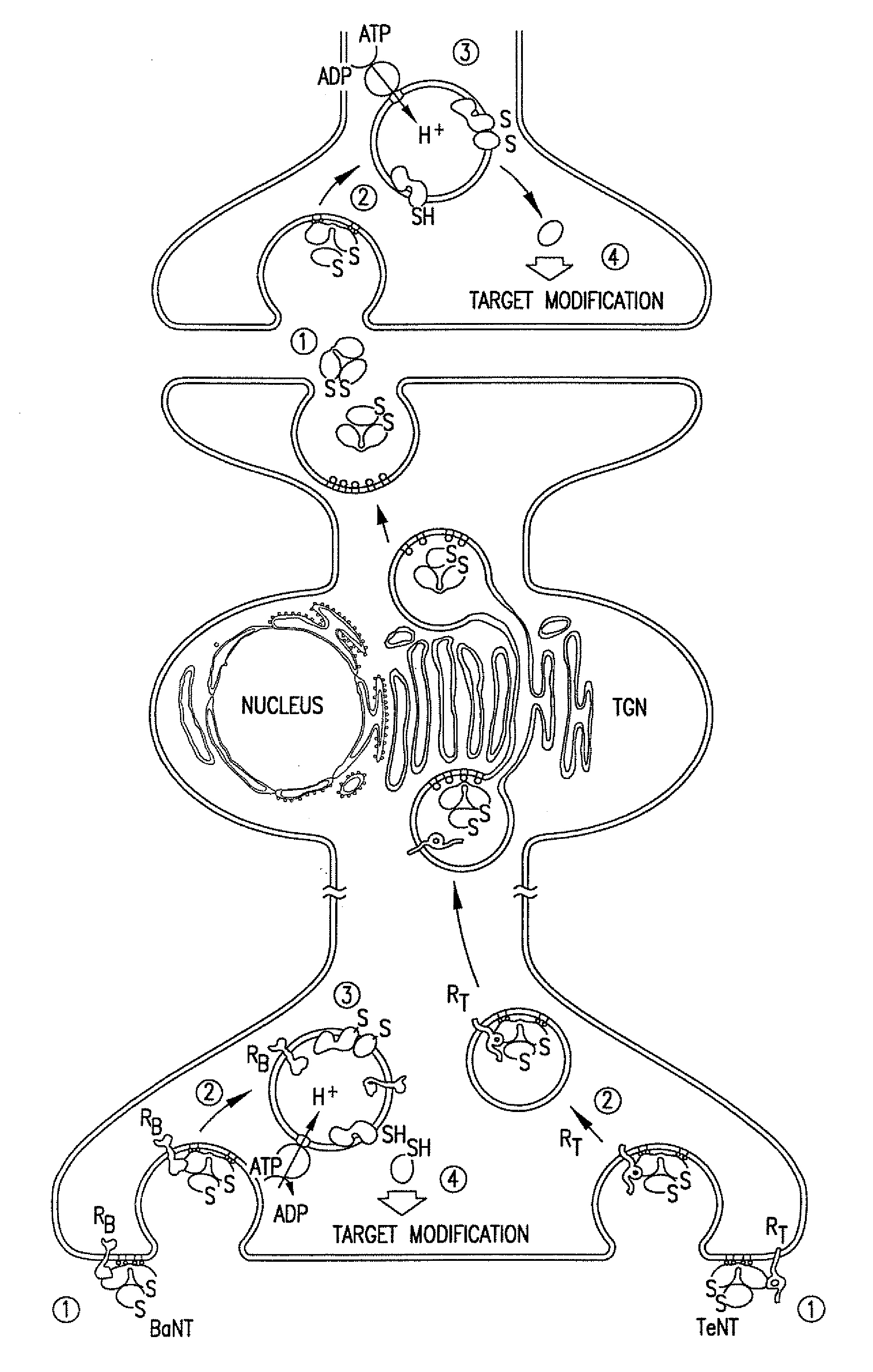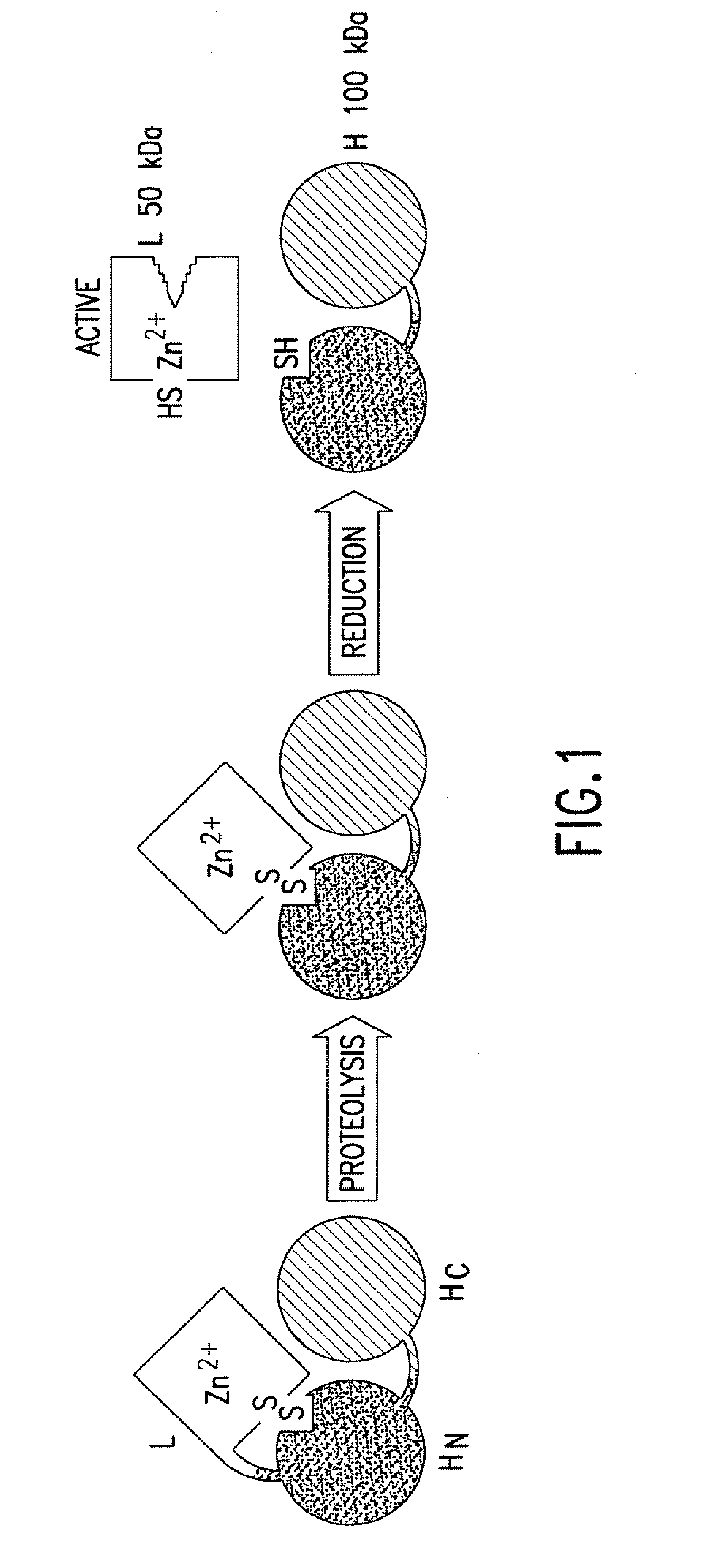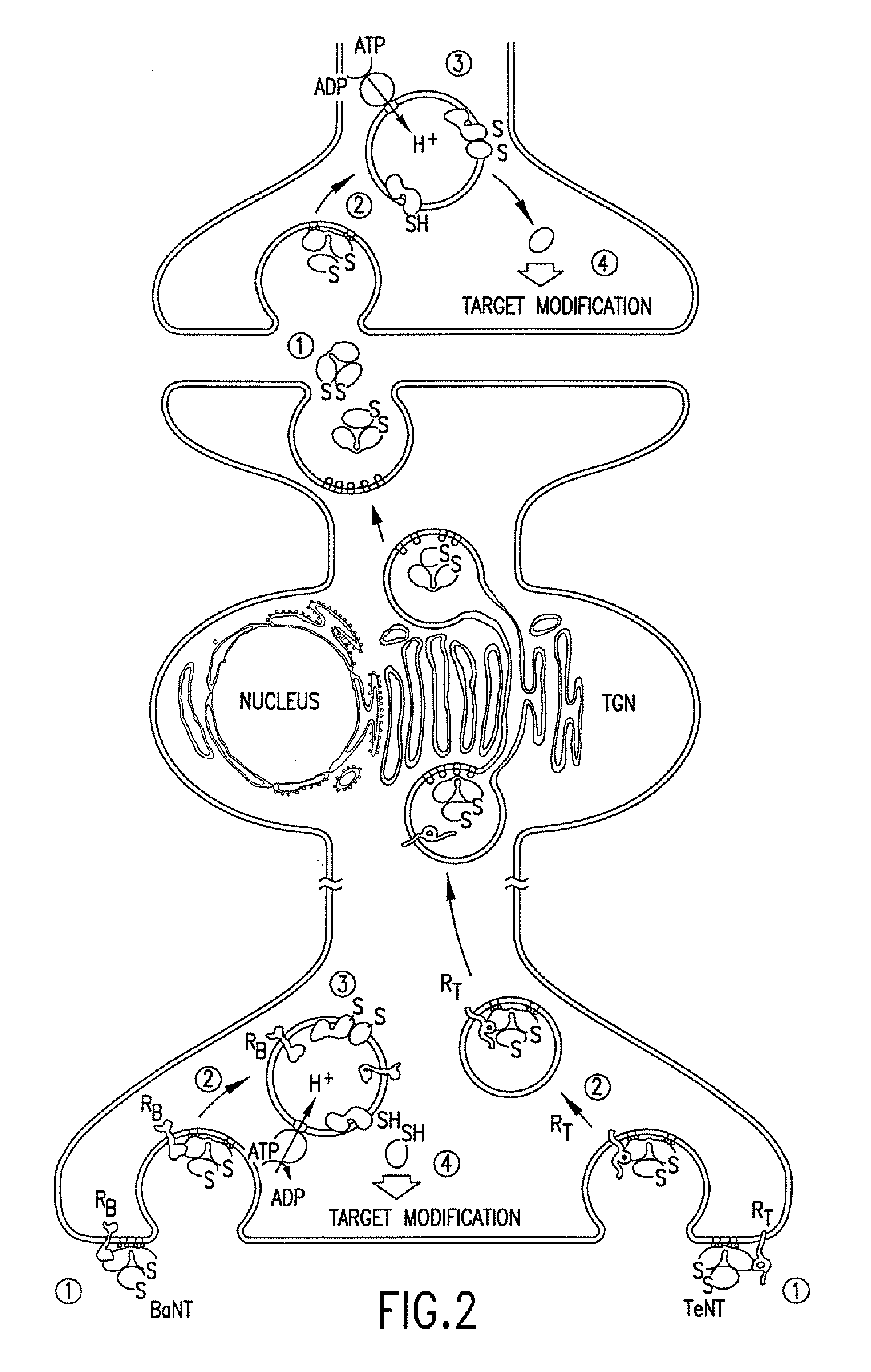Fret protease assays for clostridial toxins
a protease and clostridial technology, applied in the field of fluorescence resonance energy transfer and protease assays, can solve the problems that the botulinum serotype a/e substrate can also be susceptible to cleavage, and achieve the effect of increasing the fluorescence intensity of the donor and reducing the fluorescence intensity of the acceptor
- Summary
- Abstract
- Description
- Claims
- Application Information
AI Technical Summary
Benefits of technology
Problems solved by technology
Method used
Image
Examples
example i
Analysis of BoNT / A Activity Using Fluorescence Resonance Energy Transfer
[0189] This example describes the use of a FRET assay to analyze proteolytic activity of a botulinum toxin.
[0190] The FRET substrate X1-Asp-Ser-Asn-Lys-Thr-Arg-Ile-Asp-Glu-Ala-Asn-Gln-Arg-Ala-Thr-Lys-Met-Leu-Z2-NH2 (SEQ ID NO: 85) was synthesized by Alpha Diagnostics International (San Antonio, Tex.). This substrate contains a recognition sequence for BoNT / A flanked by a fluorescein-modified lysine residue (“X1”) and a tetramethylrhodamine-modified lysine residue (“Z2”) followed by a carboxy-terminal amide. Following proteolysis by botulinum toxin serotype A, the cleavage products X1-Asp-Ser-Asn-Lys-Thr-Arg-Ile-Asp-Glu-Ala-Asn-Gln (SEQ ID NO: 86) and Arg-Ala-Thr-Lys-Met-Leu-Z2-NH2 (SEQ ID NO: 87) are produced.
[0191] Additional FRET substrates also are synthesized: X1-Asp-Ser-Asn-Lys-Thr-Arg-Ile-Asp-Glu-Ala-Asn-Gln-Arg-Ala-Thr-Lys-Met-Leu-Gly-Ser-Gly-Z2-NH2 (SEQ ID NO: 88); X1-Ala-Asp-Ser-Asn-Lys-Thr-Arg-Ile-A...
PUM
| Property | Measurement | Unit |
|---|---|---|
| absorbance spectrum | aaaaa | aaaaa |
| resonance energy transfer | aaaaa | aaaaa |
| fluorescence intensity | aaaaa | aaaaa |
Abstract
Description
Claims
Application Information
 Login to View More
Login to View More - R&D
- Intellectual Property
- Life Sciences
- Materials
- Tech Scout
- Unparalleled Data Quality
- Higher Quality Content
- 60% Fewer Hallucinations
Browse by: Latest US Patents, China's latest patents, Technical Efficacy Thesaurus, Application Domain, Technology Topic, Popular Technical Reports.
© 2025 PatSnap. All rights reserved.Legal|Privacy policy|Modern Slavery Act Transparency Statement|Sitemap|About US| Contact US: help@patsnap.com



